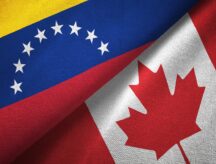Newfoundland and Labrador expected to surpass 2022 immigration target this year
It appears Canada's youngest and easternmost province will take in over 1,700 immigrants three years earlier than expected.
In 2017 the provincial government of Newfoundland and Labrador said they would welcome 50 per cent more immigrants per year by 2022. Their figures were based on the 2015 immigration rate when 1,122 permanent residencies were issued— meaning they would need to attract 600 more immigrants to the province in order to meet their target.
“That 1,700 was, I guess, a lofty goal when we started,” Bernard Davis, Newfoundland and Labrador's Minister of Advanced Education, Skills and Labour, told CIC News. “We anticipate by the end of this fiscal year we should be surpassing (our goal) quite substantially.”
The number of applications to Newfoundland and Labrador doubled from 2018 to 2019. The increase in applications may be a result of the Province’s five-year immigration strategy in conjunction with the federal government’s Atlantic Immigration Pilot Program (AIPP), as both of these initiatives were launched in 2017.
“We’ve started behind the eight ball, as they say, and now we’re seeing the fruits of our investments,” Davis said.
On the downside, the surplus in applications means that there is a backlog in processing times. Since late May, application processing times have been double the standard, according to a CBC news report.
“We can’t expect individuals to wait in a queue,” Davis said, “We want to maintain our integrity and make sure that people feel supported the whole way through.”
The province employs five specially trained Immigration Program Development Officers, and one is on leave until September.
In order to accommodate the influx of immigrants, the government plans on revising their five-year strategy to address the new challenges. More details on that strategy should be released later this year, but Davis indicated that improving immigrant retention would be in the top priorities.
Statistics Canada reports that about 51 per cent of Newfoundland and Labrador immigrants stayed in the province from 2011 to 2016.
“The retention rate is really where we want to put our focus,” Davis said, “The five-year plan was there to make sure we can accept immigrants, now the third year is really focused on trying to put supports around them, and keep them here—which is really, really important.”
The Province is looking to immigration to help improve its declining population, which currently stands at around 525,000 people.
Without immigrants, the Province projects that its working-age population would decrease 10 per cent by 2025. In the first quarter of 2019 immigration was the only factor contributing to growth, according to Statistics Canada. There were more deaths than births and more interprovincial migration out of the province.
About Newfoundland and Labrador
Newfoundland and Labrador is Canada’s youngest province having joined Confederation in 1949.
Regatta Day is a public holiday in Newfoundland and Labrador that happens every year, on the first Wednesday of August. Many people flock to the capital city of St. John's to watch boat racing at the Royal St. John’s Regatta, and mingle at social activities onshore.
St. John also has the most bars per capita of any major Canadian city.
Major industries in the province include oil exploration, mining and tourism.
Pathways to immigrate to Newfoundland and Labrador
The Newfoundland and Labrador Provincial Nominee Program (NLPNP) accepts applications under six immigration categories.
- Newfoundland and Labrador Express Entry Skilled Worker: This category is tied to the federal Express Entry system. Those who have been accepted into the Express Entry pool may qualify for this pathway. A job offer is required.
- Skilled Worker Category: Immigrants who have a guaranteed job offer in Newfoundland and Labrador, or are already working in the province with a valid work permit may also be eligible.
- International Graduate Category: Recent graduates on a Post-Graduate Work Permit may qualify for this category. Applicants must be currently employed or have a job offer lined up.
- International Entrepreneur Category: This category is for foreign nationals who want to establish, co-manage, or purchase a business in Newfoundland and Labrador. The International Entrepreneur Category will be accepting Expressions of Interest from Aug. 9 to Aug. 15, 2019.
- International Graduate Entrepreneur Category: International graduates who have studied in Newfoundland and Labrador, and who want to start a business in the province may be accepted into this category.
- Atlantic Immigration Pilot Program: Newfoundland and Labrador is one of the Atlantic provinces participating in this program linked with the federal government. It is meant to allow foreign nationals to work in jobs that have not been filled locally. The Canadian government recently announced that the pilot will be extended until December 2021.
Express Entry
The federal Express Entry system allows Immigration, Refugees, and Citizenship Canada (IRCC) to select skilled workers for immigration to Canada.
Through regular draws, the IRCC invites candidates with high Comprehensive Ranking System (CRS) scores to apply for permanent residency.
Those applicants with a provincial nomination can receive 600 CRS points towards their Express Entry application effectively guaranteeing them permanent residency.
Find out if you are eligible to enter the Express Entry pool
© 2019 CIC News All Rights Reserved
- Do you need Canadian immigration assistance? Contact the Contact Cohen Immigration Law firm by completing our form
- Send us your feedback or your non-legal assistance questions by emailing us at media@canadavisa.com



